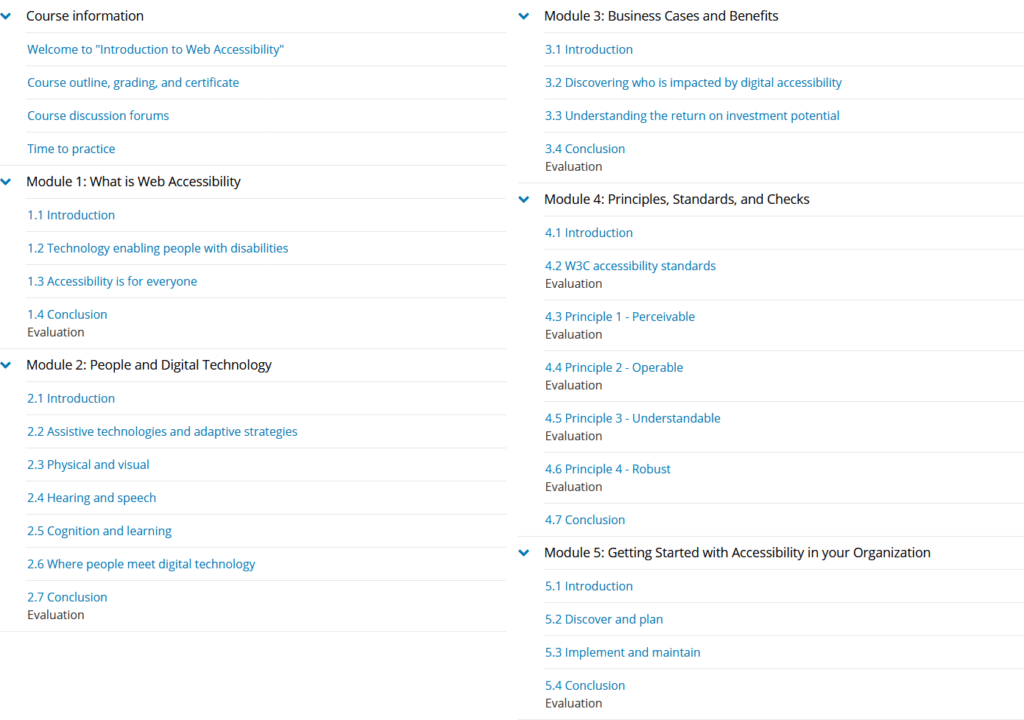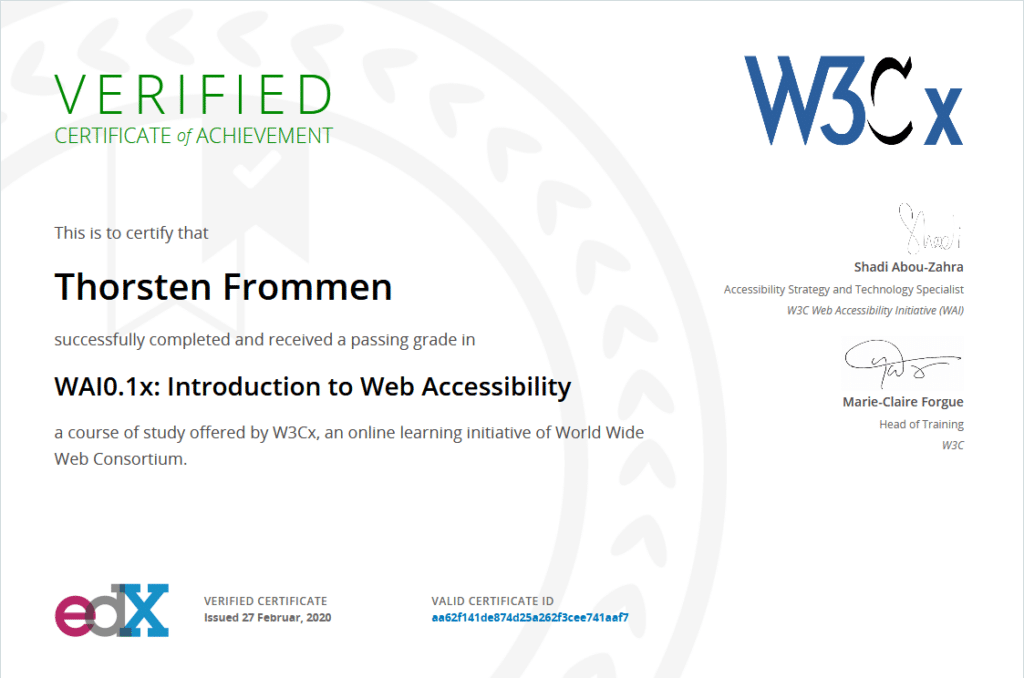Early December, last year, I came across a tweet announcing a free online course on Web Accessibility.
I signed up for the course, and I completed it about a week ago.
Contents
The course is structured into five different modules:

One important thing to note: the course is not designed for technical people only. While having some technical background might help here and there, everyone in the company would be able to complete the course.
Quick Review
To be honest, I was not super impressed with the contents, or rather: the way some of the topics were designed and shared.
But please don’t get me wrong. The contents are not generally bad. It’s more that a lot of the contents are based on—or taken straight from—existing materials from W3C or WAI, or also standards, which makes a lot of sense, of course.
I learned new things in every single track, maybe even on every other page. Some of these things were just some fun little trivia pieces, only tangentially related to what I am and will be doing as part of my job in web development, and others were really valuable and absolutely applicable.
The contents in general are a mixture of intro videos and intro texts, topic videos or small articles, but also (optional) activities such as navigating the web with your keyboard only, or inspecting/assessing certain aspects of web accessibility on a website of your choice.
Sometimes I felt that they did not really pick the right medium for a specific topic, or that the quality was not super good, which is because not all people who contributed to the course are educators or instructors.
Overall, I was able to complete the course within less than three weeks, committing an hour here and two and a half hours there. Depending on how much time you can offer, and also depending on your learning styles, I think you should be fine with two to four weeks, total.
Verified Track
While the course is free, I did sign up for the Verified Track, which means that you get access to graded evaluations, and, given you pass the course with at least 70%, you are awarded a certificate.

Did I need to do that? No, of course not. But I somehow felt that committing myself on a financial level—and in doing so, supporting both W3C and edX, so they can continue to offer free courses!—was a good idea. Having that in mind, paying US $99 in exchange for being able to do graded evaluations was worth it.
Should You Do the Course?
Personally, I think that everyone can learn a few things from this course, so yes. If you are able and willing to spend a dozen mornings/afternoons/evenings, I think you should give the course a try. After all, it’s free, so all you really invest is time. And if you feel it’s not for you, you stop. Or skim through the contents and only take a look at what you think might be interesting to you…
Please note that the course is time-limited to four weeks, starting the day you enroll. Also, it is only available until April 30, 2020. However, if you were to pay for the Verified Track, you don’t have a time limit, other than the end date of April 30, of course.
Update: Just a heads up that the course is extended until September 30, 2020.
Also, the four weeks time limit has been removed, so you literally have between now and September 30 to do the course, multiple times, if you wish.
Update 2: Now, the course is extended until January 1, 2021.
Here’s an extract of the most recent email from edX:
We expect to keep an updated version of this course available long term.
…the (free) Audit option is available without timeout while the course is open. You can start auditing the course, and later choose to get a (paid) Verified certificate to get access to all course materials including graded assessments.
Maybe that’s interesting to anyone?
Leave a Reply